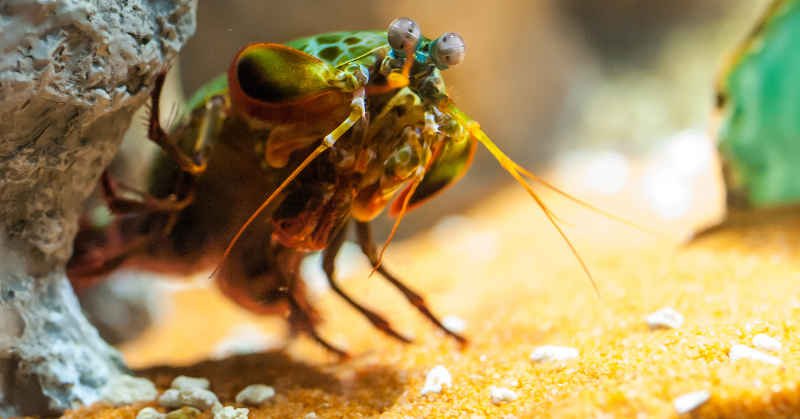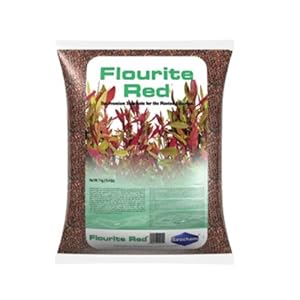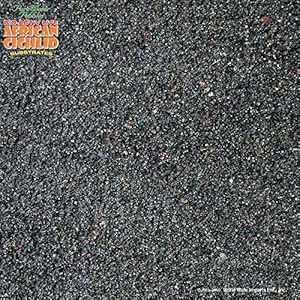In the early days of aquarium keeping the only thing you could add to the bottom of your tank was colored aquarium gravel. Choices were limited to artificial fluorescent and primary colors. Today we have more natural colors and gravel sizes to choose from. Technically speaking we call any material used on the bottom of the aquarium a “substrate” which includes natural gravel, colored gravel, construction sands, pebbles, natural crushed coral, marine sand and even soil.

(source)
Some gravel manufacturers take natural gravel and seal each pebble with a colored epoxy coating. This allows them to create any color you could imagine.
One of the newest types is very fine gravel or even sand. Gravel manufacturers have created several varieties of sand substrates for freshwater and marine aquariums.
We’ll take a look at each category.
Freshwater and Planted Aquariums
Marine and Reef Tanks
Best Rated Aquarium Sand Substrate
Here are some of the most popular aquarium sands for freshwater and marine aquariums. Most sands are designed for specific types of aquariums.
Read the qualities and properties of each type to see what they will do for your type of aquarium.
1. Imagitarium Black Sand
Imagitarium is the Petco house brand of aquarium products. At first glance you may think this black substrate is for freshwater aquariums. You would be right, based on the discus on the bag.
But there’s more to this substrate than meets the eye! This is sand, not gravel. The fine grains are perfect for planted aquariums where plant roots need a secure “soil” to grow in.
The sand will hold fertilizer tablets near the roots and slow down the release of nutrients into the water.
Imagitarium black sand is ideal for freshwater shrimp tanks. The sand is smooth and easily sifted by Amano, cherry and other clawed shrimp. Fan shrimp will have no problem walking around of a bed of this sand.
Soft-bellied tropicals, like loaches and Corys will be able to rest on the sand without scratching their skin.
There have been no reports of the sand altering water hardness, alkalinity or pH. This is a plus, proving the sand is inert and won’t change the parameters in your aquarium.
This sand can be used with African cichlids, but it won’t raise or buffer the pH. You’ll have to use a cichlid buffer to raise the pH for Africans.
But is it reef safe? Yes! Reef aquarists have had very good success using Imagitarium in nano and pico reef aquariums.
If you like the look of black sand in a reef, you’ll have no problems with this substrate. The only complaint about this substrate is from first-time sand users. The sand needs to be rinsed and then allowed to get fully wet in the aquarium. Tiny sand-coated air bubbles may form until the sand is completed wetted. This is normal and will clear up in a day or so.
2. Nature’s Ocean No.1 Aragonite Sand
Nature’s Ocean aragonite sand is 100% natural aragonite, harvested from the sea floor.
Aragonite is calcium carbonate (CaCO3). It is relatively inert under marine aquarium conditions. The crystal structure keeps the calcium and carbonate locked up and insoluble unless exposed to strong acids or a very low pH.
Although advertised for pH control in saltwater and reef aquaria, aragonite provides no pH buffering capacity for saltwater tanks, under normal tank conditions.
It is an attractive substrate for marine aquariums and provides something for gobies, jawfish, and wrasses to sift through.
Deep beds of aragonite have limited water flow and can for a denitrifying biological filter. This “live sand” form of biological filter is a popular reef tank technique. Nature’s Ocean aragonite sands cannot be used in calcium reactors because it will pack too tightly.
This aragonite sands can be used in freshwater for keeping African cichlids.
Digging cichlids will enjoy moving this sands around the aquarium! Used at a rate of ten pounds per square foot of aquarium space will give you about 1” of sand. Note that this is not a true fine sand. The material is a bit coarse compared to beach sand. The grain size is 1.2-1.7mm.
3. Flourite Red Sands
Flourite is a reddish sand made from fired clay. It will hold live and plastic plants securely in the substrate. Live aquatic plants can derive some trace elements from the substrate too.
Flourite does not release nutrients into the water and won’t stimulate algae growth. Sand substrate used with live plants should not be disturbed with heavy siphoning.
- Contains no dyes or chemicals.
- Great for live plants.
- Attractive dark red color.
- Will not change pH of the water.
4. Eco-Complete African Cichlid Sands
Eco-Complete is more than regular aquarium sands. This substrate is designed to maintain a high pH for African Cichlids tanks. Rift Lake cichlids live in water rich in calcium and magnesium carbonate and has a higher pH. Eco-Complete makes it easier to recreate the African Rift Lake environment.
The porous surface of the substrate is perfect for beneficial bacteria to colonize. In fact, Eco-Complete comes pre-activated with beneficial bacteria that keeps the water clean and free of harmful ammonia and nitrite.
Eco-Complete Cichlid Substrate contains live, water purifying bacteria that makes cycling a new aquarium faster and safer.
- Increases and stabilizes pH for African cichlids.
- Adds calcium and magnesium carbonates.
- Increases water hardness.
- Loaded with beneficial bacteria.
- Ready to use, no rinsing needed.
5. Nature’s Ocean Bio-Activ Live Aragonite
It is rich in calcium and magnesium, which helps corals in reef aquariums. The fine size grains create a natural look in marine fish tanks.
Reef aquarists will enjoy the live sand properties which include reduction of nitrate, ammonia and nitrite. Many reef invertebrates prefer to burrow and anchor in the small grains of aragonite too.
Through a patented process, Bio-Active aragonite comes pre-conditioned with beneficial marine bacteria. Your aquarium will be immediately stabilized and ready for fish, live rock and inverts.
- Instant biological balance.
- Reduces harmful nitrate through live sand process.
- Maintains proper pH.
- Stabilizes water quality.
6. Arag-Alive Special Grade Pink Bimini
It is not a bright pink color, just a slight tint that will give your tank an authentic reef look.
Made from natural aragonite, the sand contains calcium and magnesium carbonate. The sand contains no dyes or artificial chemicals.
The sand comes pre-conditioned with live bacteria to help new aquariums become biologically balanced quickly. d.
The aquarium water may become slightly hazy until the natural coral dust settles within 24 hours.
- Attractive natural pink color.
- Suitable for marine fish and reef aquariums.
- Great for live sands reef systems.
- Helps reduce nitrate.
Navigation







